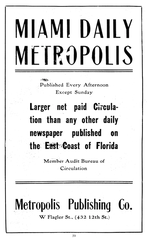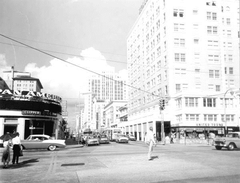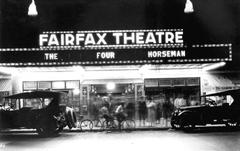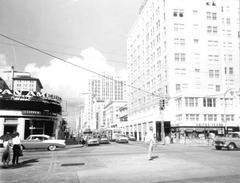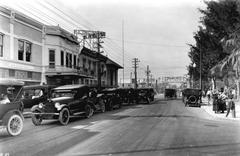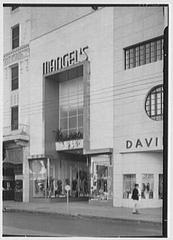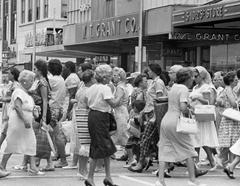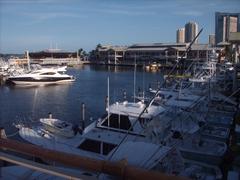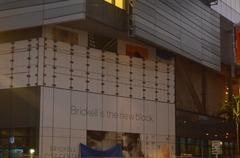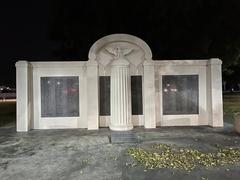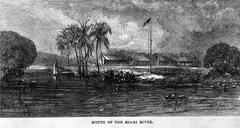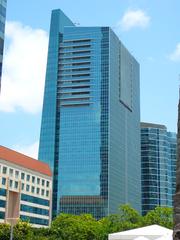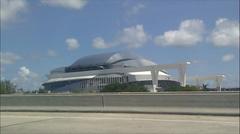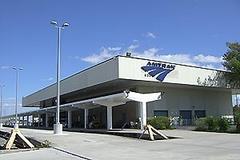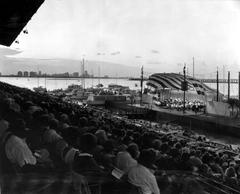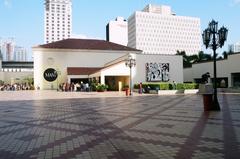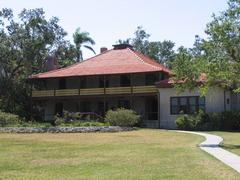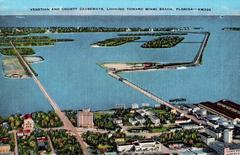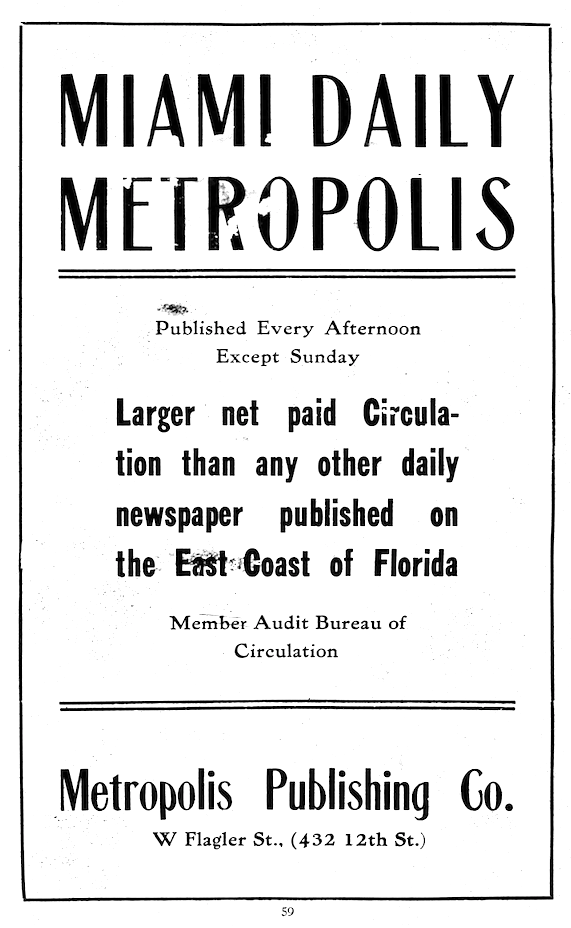
Flagler Street Miami: Visiting Hours, Tickets, and Historical Sites Guide
Date: 15/06/2025
Introduction: Discover the Heart of Downtown Miami
Flagler Street is the historic and cultural spine of Downtown Miami—a place where the city’s rich past intersects with its vibrant, modern-day energy. Named after Henry Flagler, the visionary industrialist whose Florida East Coast Railway transformed Miami in 1896, this iconic street has witnessed the city’s evolution from a modest coastal town to a bustling metropolis (Travel + Leisure, Miami DDA). Flagler Street’s enduring legacy is visible in its historic landmarks, diverse communities, and the ambitious revitalization projects that continue to shape its urban landscape.
This comprehensive guide offers essential information about visiting Flagler Street, including hours, ticket details, accessibility, nearby attractions, and travel tips. Whether you’re a history buff, culture seeker, or urban explorer, Flagler Street provides a unique opportunity to immerse yourself in Miami’s vibrant past and exciting present (Condo Black Book, Financial Times).
Table of Contents
- Introduction
- History and Urban Evolution
- Modern Revitalization
- Key Attractions and Landmarks
- Visiting Hours, Ticketing, and Accessibility
- Travel Tips and Transportation
- Guided Tours and Events
- Nearby Attractions
- Frequently Asked Questions (FAQ)
- Conclusion and Visitor Recommendations
- Sources
History and Urban Evolution
Early Development
Flagler Street’s story began in the late 19th century when Henry Flagler extended his railway to Miami, spurring the city’s rapid growth. Originally called 12th Street, it quickly became the city’s main commercial corridor, home to Miami’s first hotel, courthouse, and retail shops (Miami DDA). The construction of the 12th Street Bridge in 1905 connected new neighborhoods and enhanced commerce, while the introduction of a trolley line in 1915 further cemented its importance (University of Miami Libraries).
Chaille Plan and Renaming
In 1921, the Chaille Street Plan renamed 12th Street to Flagler Street, honoring Henry Flagler and establishing it as the north-south dividing line in Miami’s city grid (Wikipedia, The JF Blog).
The Roaring Twenties Boom
The 1920s saw Miami’s population soar, and Flagler Street blossomed as the city’s social and commercial nucleus. It was lined with popular retailers, movie theaters, restaurants, and artfully designed buildings. Its prosperity even weathered the Great Depression, and it facilitated the development of nearby communities like Coral Gables, Miami Shores, and Hialeah (Mana Common).
Mid-20th Century: Peak and Decline
Flagler Street reached its zenith in the 1950s, bustling with department stores, cinemas, and eateries (Mana Common). Notable landmarks from this era include the Olympia Theater, a Mediterranean Revival gem from 1926 (Miami DDA). However, the shift toward suburban living and increased automobile traffic in the 1970s led to a decline, with many high-end retailers replaced by discount stores and growing urban blight.
Modern Revitalization
Flagler Street is now undergoing a thoughtful transformation through the Flagler Street Beautification Project. This multi-phase initiative, launched in 2016, aims to restore the corridor as a pedestrian-friendly, festival-style boulevard with expanded sidewalks, public art, enhanced lighting, and accessible public spaces (DeepRoot, Mana Properties). The project supports a vibrant mix of local businesses, increasing foot traffic and fostering a renewed sense of community.
Key design features include:
- Curbless, pedestrian-friendly streetscape for seamless accessibility.
- Expanded sidewalks and outdoor dining to boost street-level activity.
- Energy-efficient lighting and landscaping for aesthetics and safety.
- Public art and seasonal events to celebrate Miami’s multicultural heritage (Calle Ocho News).
Key Attractions and Landmarks
Olympia Theater
A Mediterranean Revival theater built in 1926, the Olympia remains a beloved cultural venue hosting concerts, plays, and special events (Miami DDA).
Historic Walgreens Building (Julia & Henry’s Food Hall)
Located at 200 E. Flagler Street, this 1937 Art Deco landmark now houses Julia & Henry’s Food Hall—a dynamic culinary destination featuring 29 eateries, a rooftop restaurant, and a basement speakeasy (Condo Black Book; Financial Times).
Time Century Jewelry Center
Formerly Metro Mall, this newly renovated luxury hub anchors Miami’s Jewelry District, offering high-end retail and artisan craftsmanship (Condo Black Book).
Vintage and Artisan Market
Held every Sunday since August 2024, this open-air market features over 40 vendors selling antiques, crafts, art, and specialty foods (Financial Times).
Miami-Dade County Courthouse
A striking Neoclassical building from 1928, the courthouse is a symbol of Miami’s civic history and a National Register of Historic Places landmark.
Visiting Hours, Ticketing, and Accessibility
- Flagler Street Access: Open 24/7 as a public street.
- Shops & Restaurants: Generally open from 10:00 AM to 10:00 PM; individual business hours may vary.
- Julia & Henry’s Food Hall: Open 11:00 AM to 11:00 PM.
- Vintage Market: Sundays, 10:00 AM to 5:00 PM.
- Olympia Theater: Visit their website for showtimes and ticket information.
- Tickets: No general admission for the street. Tickets may be required for theater events, rooftop dining, or guided tours.
- Accessibility: Recent upgrades include widened sidewalks, curb ramps, accessible crosswalks, and wheelchair-friendly public transit (Freebee shuttle, Metromover).
Travel Tips and Transportation
- Public Transit: Flagler Street is easily reached by Metrobus, Metromover (free), and the Freebee electric shuttle. The Government Center and Historic Overtown/Lyric Theatre stations are nearby (Barefoot Caribou).
- Parking: Limited due to ongoing construction; public transit or rideshare is recommended.
- Getting Around: Use the Freebee shuttle or Metromover for convenient, car-free exploration.
- Family-Friendly: The area is suitable for all ages, with open pedestrian zones and regular cultural events.
- Best Times to Visit: Weekdays for a relaxed experience; evenings and weekends for lively street life and special events.
Guided Tours and Events
- Walking Tours: Local operators offer guided walks focused on Flagler Street’s architecture and history.
- Events: Flagler Street hosts seasonal festivals, art walks, holiday celebrations, and live performances throughout the year (Calle Ocho News).
Nearby Attractions
- Bayfront Park: Waterfront green space with events and scenic views.
- Bayside Marketplace: Shopping, dining, and entertainment complex.
- Downtown Miami Art District: Galleries, studios, and public art installations.
- Perez Art Museum Miami: Acclaimed contemporary art museum nearby.
Frequently Asked Questions (FAQ)
Q: What are the main visiting hours for Flagler Street?
A: The street is always open, but most businesses operate from 10:00 AM to 10:00 PM; some venues and events have specific hours.
Q: Is there an admission fee?
A: No, access to Flagler Street is free. Tickets are only needed for select venues or events.
Q: How do I get there by public transport?
A: Take Metrobus, the free Metromover, or the Freebee shuttle to the heart of Flagler Street.
Q: Is Flagler Street wheelchair accessible?
A: Yes, the street and transportation options are designed to be accessible.
Q: Are guided tours available?
A: Yes, several companies offer guided walking tours focusing on history and architecture.
Q: Is Flagler Street safe?
A: Yes, especially during the day and during events. As in any urban setting, remain aware of your surroundings.
Conclusion and Visitor Recommendations
Flagler Street stands as a living testament to Miami’s spirit—blending a storied past with cutting-edge urban revitalization (Miami DDA, The JF Blog). Visitors will find an eclectic mix of historic landmarks, diverse dining, vibrant markets, and cultural programming set amid a beautifully restored streetscape (DeepRoot, Mana Properties). Whether you’re drawn by architecture, art, shopping, or festivities, Flagler Street promises a memorable Miami experience.
Plan your visit:
- Check business hours and event schedules in advance.
- Use public transit for convenience.
- Explore the street’s historic and modern attractions.
- Support local businesses, markets, and artists.
For real-time updates, event notifications, and insider tips, download the Audiala app and follow us on social media.
Sources
- Travel + Leisure, Comprehensive Guide to Miami
- Miami Downtown Development Authority (DDA), Urban Planning Update: Flagler Street Miami
- University of Miami Libraries, Little Havana Chronology
- Wikipedia, Flagler Street
- The JF Blog, Map, Railroad, and the Development of Miami
- Mana Common, Miami’s Flagler Street Over the Years
- DeepRoot, Miami’s Historic Flagler Street Transforms into Festival-Style Road
- Condo Black Book, Downtown Miami Revitalization Begins with Flagler Street Makeover
- Financial Times, Miami Downtown Revitalization
- Calle Ocho News, Flagler Street Shines Bright as Holiday Lights
- Miami and Beaches Visitors Guide, Visitors Guide
- NBC Miami, Financial Help for Flagler Street Businesses
- Barefoot Caribou, Miami Travel Tips
